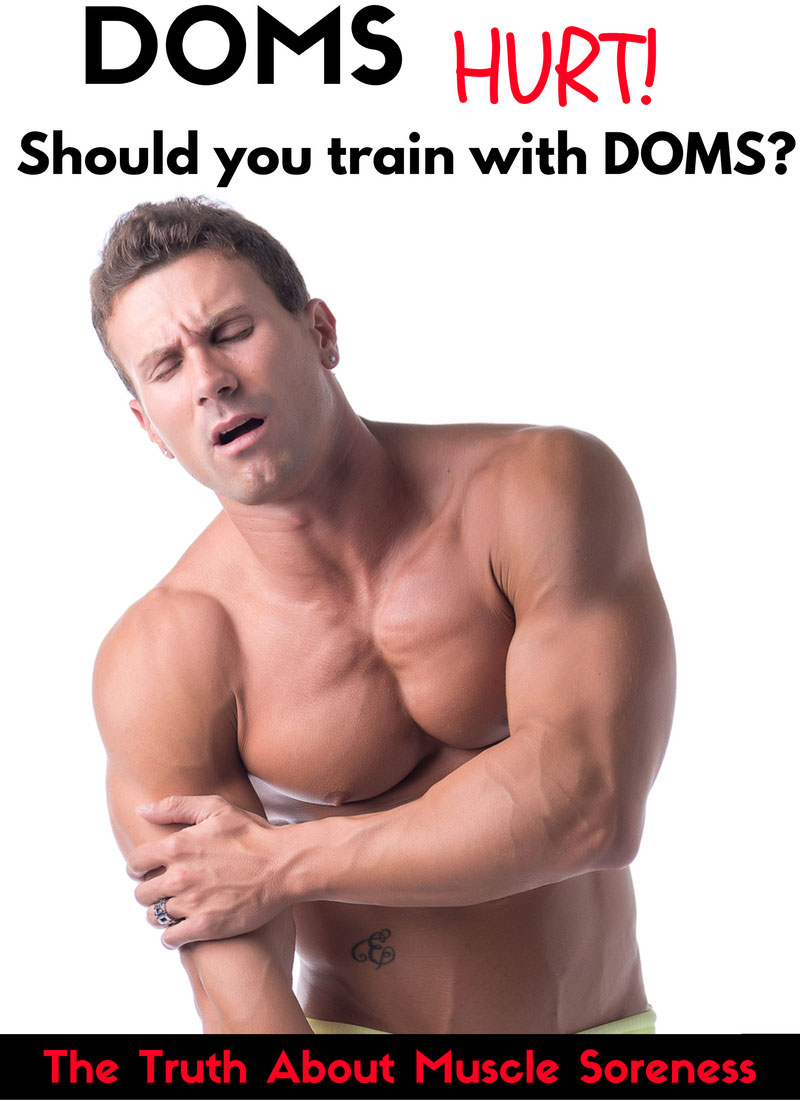
Muscle Soreness and DOMS – Delayed Onset Muscle Soreness
How to Deal When Post-Workout Muscle Soreness Is Actually Really Painful. These five tips might help ease your misery. The ultimate paradox of exercise is that muscles get stronger by breaking down first – the rebuilding process after a workout is where the real magic happens. Sometimes, that can leave your muscles feeling sore, which is totally normal. But there’s normal sore, and then there’s too sore. DOMS usually peaks 48 to 72 hours after a workout, as your body goes to work on the process to repair muscle fibers that were torn during exercise. There are varying degrees of pain depending on how much damage has been done (and other factors like genetics and how hydrated you are). Regularly experiencing an extreme level of soreness isn’t something you should make a habit of. Who would want to anyway?
There’s some research showing that the muscles can actually atrophy, or break down too much when they get that sore. It’s like the muscle was overworked, and it can’t repair itself adequately. Being more sore doesn’t mean you’re getting better results. Plus, since you need more time off to recover, it can throw a wrench in your workout plan and make you miss additional training.
- Extreme soreness can happen occasionally, usually after you’ve done something your muscles aren’t used to.
- The best remedy for soreness is time.
Unfortunately, if you’re already in the throes of monumental soreness, the only sure-fire remedy is time. DOMS lasts about two to three days after the soreness peaks. But there are a few things you can do to hopefully help ease the pain while you wait, and in some cases, maybe even speed the process along.
Step 1: Get In Some Light Movement
Yes, being sore sucks. But if you’re really sore and you decide you’re not going to get off the couch, that’s the worst thing you can do. This is because activity increases circulation, improving blood flow throughout the body.
Increased blood flow and nutrients to the muscles does speed up the repair process, which in turn should reduce DOMS. The idea is that the faster these nutrients get to their destination the faster they can get to work, and the faster you’ll feel better.
- Gentle activity, like going for a walk or hopping on a recumbent bike at the gym.
- Strength Training very lightly is another great option.
- Seriously, light means super light, since you don’t want to do more damage to the muscle fibers.
Step 2: Hydrate, Hydrate, Hydrate, and Drink Some More Water
Step two: Drink water. Seems self explanatory. There is a big correlation between dehydration and increased muscle soreness and DOMS.
The main theory here is that water helps flush out waste products. When muscles break down, they release waste products and toxins that need to be filtered out of the body. These waste products are associated with increased soreness.
Step 3: Do Some Light Stretching
Again, the keyword = light. Stretching can be a great way to release tightness and increase your range of motion when you’re sore. This can make you feel better, even though it’s not actually healing the tears in your muscles or making them repair any faster. Stretch until it feels pretty tight, let up after 5 to 10 seconds, and then repeat that, without ever getting to the point where it feels unbearable. If it’s too painful to even think about stretching, skip it.
Step 4: Make Sure You’re Getting Enough Protein.
Protein is a critical nutrient for building and maintaining muscle. It plays a huge role in helping your muscles recover from a tough workout.
While you should be eating enough protein all the time to prevent recurring or long-lasting soreness from your workouts it can still be helpful to double check that you’re eating enough protein after the damage is done. This doesn’t mean excessively high amounts of protein. Needs vary, but people who work out should aim for about 1.4 to 2 grams of protein per kilogram of body weight.
- For an active person who’s 150 pounds, that’s about 95 to 136 grams per day, split up between all your meals.
Step 5: Try Heat and/or Ice To Reduce The Pain
The debate between heat therapy and cold therapy is ongoing, but when it comes down to it, it’s really just about what feels good to you. For the most part, the effects are temporary. But when you’re super sore, any relief is worth it.
- Ice can help reduce the swelling that sometimes comes along with extreme soreness. Bringing the swelling down can help reduce some pain-causing tension. Elevating your legs (if that’s where you’re sore) can also help with this.
- Heat can also minimize tension and pain signals. So if relaxing in a warm bath makes you feel better, do that.
- Time will heal all soreness—as long as it’s not something more serious.
Absolute Worst Case Scenarios
Ok, this is rare, but not so rare that its not worth mentioning. While you’re recovering, it’s also important to watch for signs of something more serious.
A syndrome called Rhabdomyolysis occurs when over-worked muscle fibers die and release the protein myoglobin into the bloodstream, which can lead to kidney damage and even failure. This is a medical emergency, and along with extreme muscle pain, weakness, and swelling, the main sign is often cola-colored urine. If you notice these signs, get to a doctor ASAP.
If you experience sharp pain during your workout, or if the soreness doesn’t start improving after a couple of days, that can be a sign that you’re injured and need to see a healthcare professional.
Wrapping It Up
As for me, my DOMS goes away about three days after my soreness peaks. I spend that time taking my dogs for walks, switching between heat and ice treatment, maybe some anti-inflammatory, and super light exercising while waiting for sweet relief. Eventually, that relief does come. Oh yeah, I also recommend spending some time figuring out why you are super sore!! Its usually pretty easy to figure out.
Check out our website: www.LakeCountryTraining.com
Thanks!!



